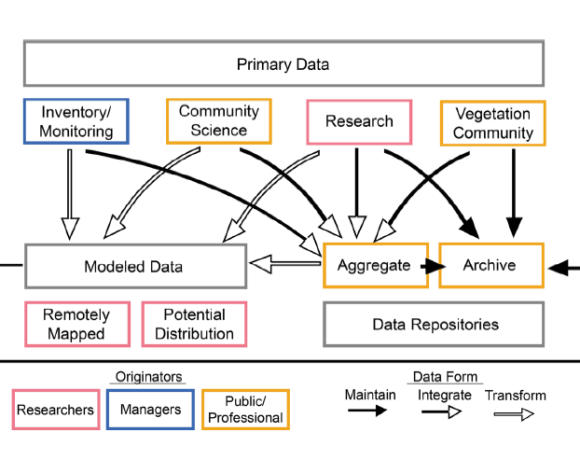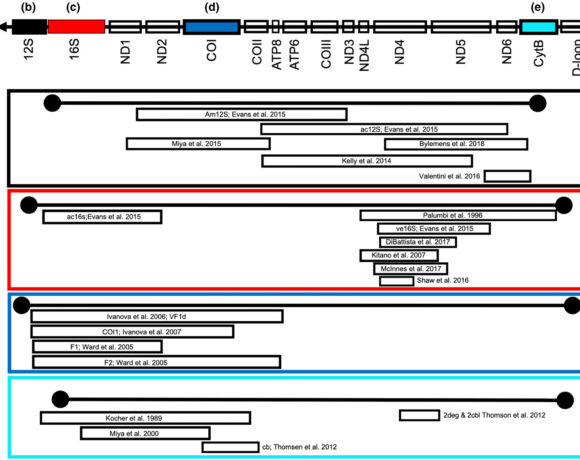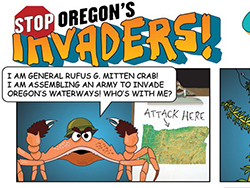An approach that TIEs together actionable research and management
Morelli, T.L., Brown-Lima, C.J., Allen, J.M., Beaury, E.M., Fusco, E.J., Barker-Plotkin, A., Laginhas, B.B., Quirion, B.R., Griffin, B., McLaughlin, B. and Munro, L., 2021. Translational invasion ecology: Bridging research and practice to address one of the greatest threats to biodiversity. Biological Invasions, 23(11), pp.3323-3335. https://doi.org/10.1007/s10530-021-02584-7
Summary written by Justin Dalaba, edited by Carrie Brown-Lima
It’s time to TIE it all together. In our last research summary of 2021, we’re sharing original work published this year by the Northeast RISCC leadership team. Drawing from past practice, Morelli et al. describe the framework of Translational Invasion Ecology (TIE), which is an approach to addressing the knowing-doing gap between invasive species research, management, and policy. This collaborative process allows each group to contribute their perspective, expertise, and effort throughout the research process to generate new information and solutions to improve invasive species management. The process can be applied to current institutional frameworks, and the authors present examples of where it has already been successfully implemented. The five actionable steps and ideas for implementing TIE within your organization are summarized below.
Actionable steps:
These steps do not always occur in order, and the starting point to the TIE approach will depend on the context of the problem.
- Define the problem & identify stakeholders – This could start with a knowledge gap that becomes a shared issue through TIE, or with the engagement of different stakeholders to identify shared goals and problems
- Collaborative discussion through boundary spanning – The TIE process hinges on researchers, stakeholders, and decision makers working together to determine needs and desired outcomes. Facilitation by a third-party individual or organization whose mission is to coordinate across boundaries and link to external networks or sources of information (i.e. boundary spanners) can be critical to addressing collaboration barriers.
- Research and practice – Folding in expertise and perspectives from research and practice with regular updates and opportunities for feedback will ensure specific management needs are met and are accessible for implementation.
- Outcomes/outputs – In addition to increased knowledge and ability to manage invasive species, TIE can result in other impactful outcomes, such as peer-reviewed publications, best management practices, tools for monitoring and measuring invasion, access to funding, etc.
- Evaluate and improve – A critical final step is to reflect on successes and failures to improve practices and revisit the TIE process as needed.
Ideas for incorporating TIE within your organization:
- Establish boundary-spanning positions within your organization, or work with an existing boundary-spanning organization to build relationships across disciplines
- Expand your network by prioritizing regular involvement at academic and management-focused conferences and meetings
- Share concrete examples of the TIE process to empower and encourage others
- Measure and report outcomes of TIE, such as indicators of success, impact metrics, and improved management outcomes
This summary has been adapted from the Northeast RISCC management network.













